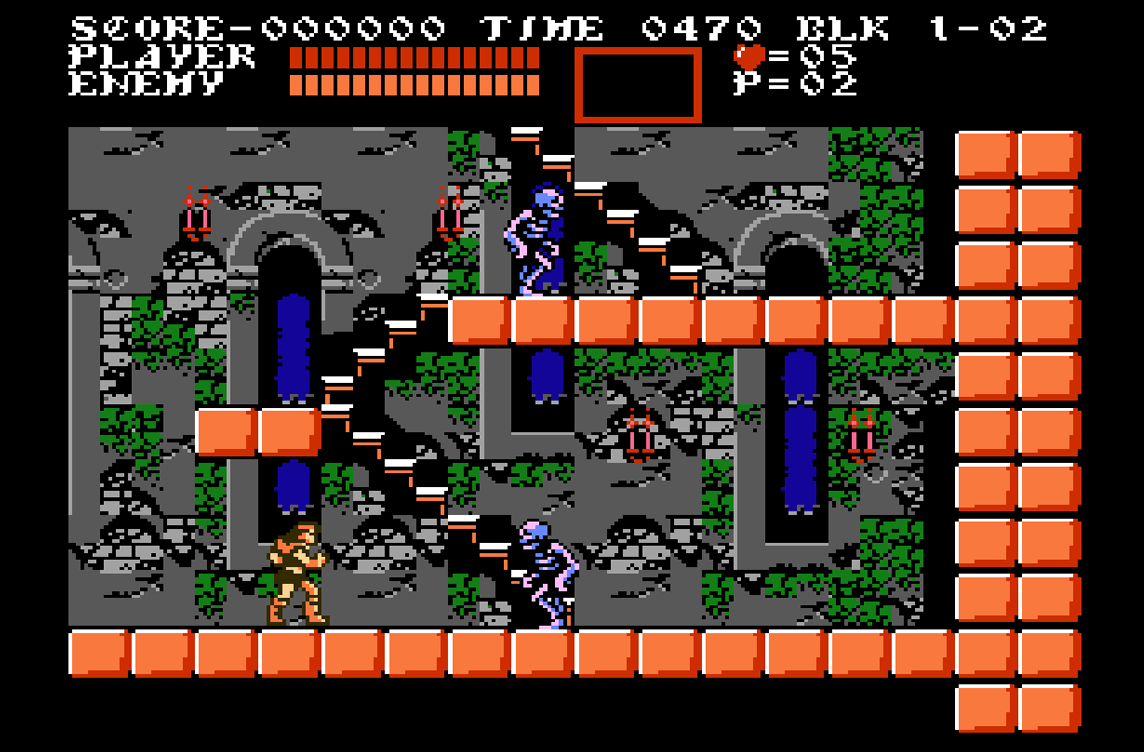Approaching Castlevania III: Dracula’s Curse without the nostalgic lens many fans possess, I embarked on a journey into the world of Trevor Belmont and the iconic Castlevania series. As someone not steeped in its legacy, I sought to understand its appeal and assess its gameplay, graphics, and overall experience with fresh eyes.
Gameplay and Controls
Castlevania III adheres to the classic platformer formula, with players assuming the role of Trevor Belmont as they traverse treacherous levels filled with enemies, hazards, and traps. The game’s primary mechanic revolves around Trevor’s trusty whip, which serves as his main form of attack. However, unlike modern platformers that offer more fluid combat mechanics, Castlevania III’s controls feel rigid and unresponsive.
Trevor’s whip can only be swung directly in front of him, leaving him vulnerable to attacks from above and below. This limitation, coupled with Trevor’s slow movement speed and cumbersome jumping mechanics, adds an additional layer of challenge to the gameplay.

Level Design and Difficulty
One of Castlevania III’s defining characteristics is its unforgiving difficulty level. While challenging gameplay can be rewarding, Castlevania III often veers into the realm of frustration due to its punishing level design and relentless enemy placements. Players must navigate through stages riddled with pitfalls, spikes, and enemies that spawn in seemingly impossible-to-dodge locations. The combination of precise platforming and limited controls makes progress feel like an uphill battle, testing the player’s patience and skill at every turn.
Character Options and Abilities
In an attempt to diversify gameplay, Castlevania III introduces multiple characters, each with their own unique abilities. Players have the option to switch between Trevor and additional characters they encounter throughout the game, each offering distinct advantages and disadvantages. However, the execution falls short of expectations, as the characters’ abilities often feel underutilized and fail to significantly impact gameplay. Furthermore, the shared health bar among characters diminishes the strategic value of character switching, resulting in a missed opportunity to enhance the overall experience.
Graphics and Sound
Despite its gameplay flaws, Castlevania III shines in its presentation, boasting detailed graphics and a haunting soundtrack that perfectly complements its gothic atmosphere. The game’s visuals feature vibrant colors and intricate sprite work, bringing its dark and foreboding world to life. Additionally, the atmospheric soundtrack sets the tone for each level, immersing players in its eerie and atmospheric ambiance. While the gameplay may falter, Castlevania III’s audiovisual elements remain a highlight of the experience, showcasing the technical prowess of the NES hardware.
Conclusion
Castlevania III: Dracula’s Curse is a testament to the enduring legacy of the Castlevania series, offering a challenging yet flawed gameplay experience that continues to captivate players decades after its release. While its stiff controls and punishing difficulty may deter some, its striking visuals and atmospheric soundtrack ensure that it remains a noteworthy entry in the pantheon of classic NES titles.
Embrace the challenge, but tread carefully in the dark halls of Dracula’s castle.

Play Castlevania III: Dracula’s Curse Online Anywhere, Anytime!
Fans of the series can enjoy Castlevania III: Dracula’s Curse across various platforms, including desktop, mobile, and tablet devices. Whether revisiting the game’s nostalgic roots or experiencing it for the first time, players can immerse themselves in its gothic world across a range of gaming platforms.